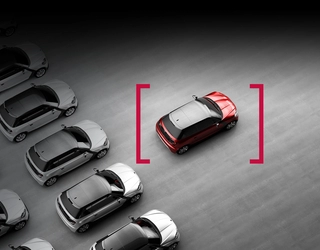
Why future vehicle differentiation starts and finishes with a reputation for safety
contact us

By Lenora Clark, Director of autonomous driving and safety technology at MacDermid Alpha Electronics Solutions
Picture the scene. It’s the age of true mobility. The automotive sector has transitioned from an ownership model to a vehicle leasing model, with the majority of vehicle purchases being made by large fleets. From a consumer point of view, choosing which vehicle to use to get from A to B has never been simpler – it’s the one that is nearest to them. Engine performance no longer matters, since engines are long gone. The price of the vehicle is irrelevant; they aren’t buying it. Aesthetics are arguably not so important if, they aren’t owning the car outright; it will never sit in their driveway overnight.
When the vehicle takes over from human control, perhaps the most important concern from an occupant point of view is safety. This will be critical to the brand reputation: having a brand associated with high safety standards will be a key differentiator when so much else is equal. With most OEMs forming partnerships throughout the supply chain and sharing technologies, how can one really differentiate here?
The path to a safe autonomous vehicle starts with creating systems that work both individually and together to create a safer, more efficient driving experience. Today’s supply chains typically provide hardware and software that inform the driver of potential hazards. At higher levels of autonomy, these will also intervene in the vehicle’s operation to create a safer outcome. As the industry moves from level two to level three autonomy, the reliability of Advanced Driver Assistance Systems (ADAS) takes a central role in ensuring safety. Carmakers need to do all they can to avoid the severe reputational damage that can be caused by an ADAS-fault related vehicle recall.

One way to improve the reliability of ADAS is to take a systems-level approach to the design of such technologies. It is here where materials will play an integral role: specifying optimal materials will support the function and reliability of these systems. It is possible to aid reliability of ADAS by using unique substrates, which offer greater performance, while saving weight and space. Miniaturization will accelerate innovation and provide further efficiency savings. The use of specific chemical compounds will overcome typical performance limitations and improve durability.
Even when it comes to joining materials within ADAS hardware builds, there are choices to be made, which can improve reliability of the overall system. For example, using a high-durability solder alloy designed to withstand greater heat resistance within a printed circuit board assembly can also improve reliability, particularly since solder joint fractures are typically one of the leading causes of electronic failures. Our video explains some of the options that can overcome the challenge of solder joint fractures.
At MacDermid Alpha Electronics Solutions, we take a systems-level approach to ADAS design, working in partnership with OEMs and Tier 1 suppliers to create solutions aimed at advancing ADAS technology and reliability to help carmakers achieve next level autonomy. We understand the critical role that these systems play, both today and in the future, when it comes to vehicle safety and brand reputation. After all, no carmaker wants to have to suffer the financial cost and reputational damage of a failure-related recall, particularly when brand identity will play such a large role in future vehicle differentiation.